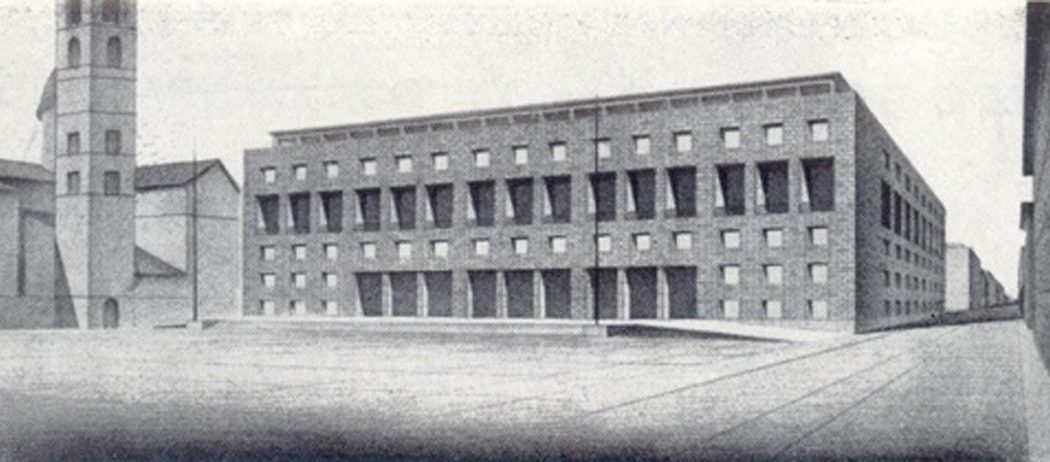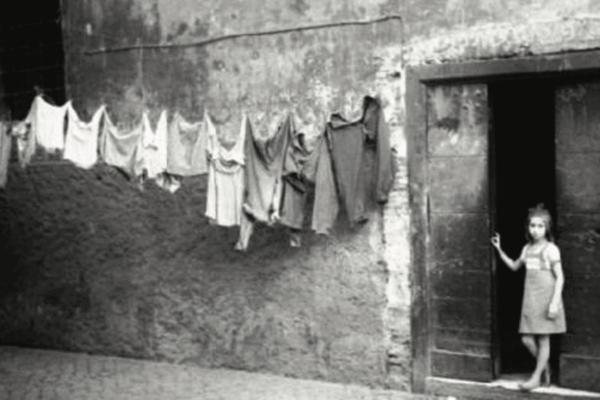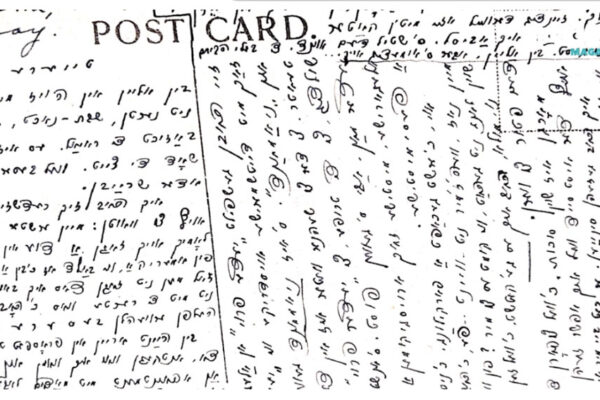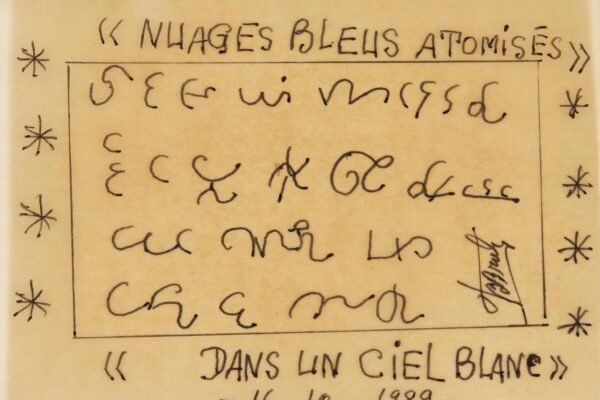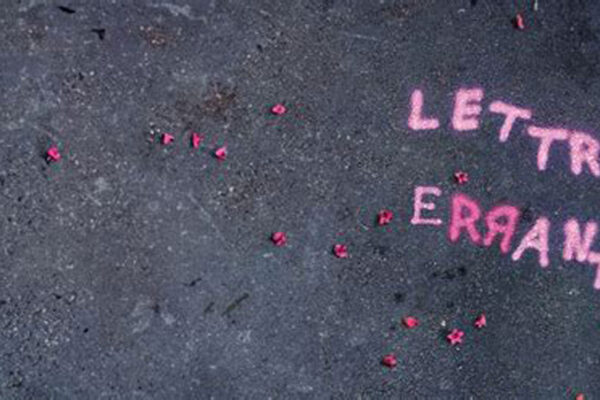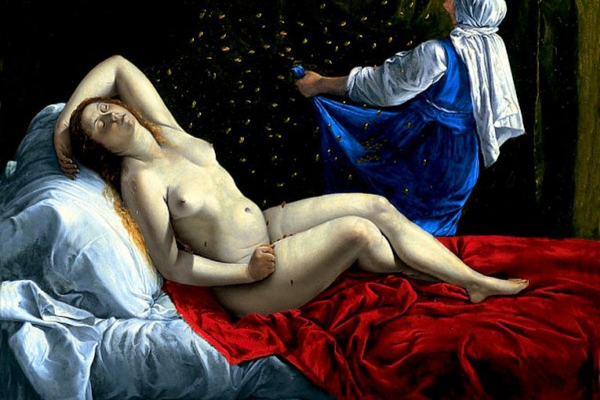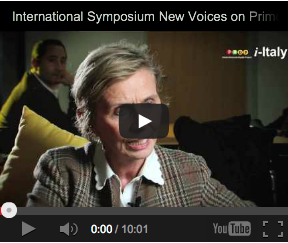Fascist Italy: Architectural and Urban Histories
At the heart of the historiography of architecture under Italian fascist rule lie questions of political allegiance and valence. How ‘fascist’ were the architects who designed a huge number of monumental and public works for Mussolini’s regime (1922–1943) — in particular, the Rationalists, who formed the first right-wing modernist movement? Were they true believers? Or did they cynically belabor fascist rhetoric in hopes of garnering commissions for high-profile state projects? And, assuming fascist-era buildings operated as politically didactic vessels, does that mean those buildings have maintained their power to persuade, up to the present? Are they still ‘fascist’ in any meaningful sense? The four recent books discussed here bring us up to date on scholarship’s current views regarding these issues. The first two bring new perspectives and detail to familiar topics, while the latter two, by veterans of the field, build on their authors’ earlier works, presenting their arguments for broader audiences.1
Lucy M. Maulsby’s Fascism, Architecture, and the Claiming of Modern Milan (1922–1943) provides a substantial account of how Mussolini’s government went about increasing its foothold in Milan through architectural design and urban modifications, despite a variety of obstacles posed by municipal authorities and local business interests. Fascist-era Milan has not been much studied by architectural historians: along with other Italian cities’, its history has been overshadowed by scholars’ emphatic interest in Rome’s extensive demolitions and constructions.2 And yet, there is good reason to examine fascist rule’s impact on Milan, where Mussolini was editor of the Socialist Party’s newspaper (Avanti!) until he was expelled from the party for supporting Italy’s intervention in the First World War. It is also where in 1919 he created the fasci di combattimento, the seed of what would become the Fascist Party in 1921. Using street violence as their principal method, his thugs chased the Socialists from the city and built up a brutal and well-financed movement. After Mussolini’s 1922 appointment as Prime Minister, however, the Fascist Party moved swiftly to improve its image by whitewashing the memory of its scruffy beginnings. Maulsby’s study follows its efforts to take on a more legitimate profile and become acceptable to Milan’s bourgeois power base, through architecture. How did the Party endeavor to make this particular Italian city ‘more fascist’ while simultaneously shaping it to local bourgeois tastes, and how successful were its efforts?
Maulsby answers these questions through close analyses of major building projects. Aside from the introductory ‘Milan in Context’, the book’s five chapters are devoted to specific building types. In each case, the Party’s priority was to create a visible presence in the heart of the city, at a time when the bourgeois center had already begun to squeeze out the working classes, who were also the remaining base of Socialist support. One might expect the Party to have invested heavily in bringing workers into the fascist fold, but getting Milan’s industrialists and bankers on its side was initially more pressing. Hence the importance of identifying available central sites, and the relevance of beginning each of these chapters — as Maulsby does — with a detailed accounting of the struggles over sites and financing, which preceded debates over design. These sections put the author’s detailed and thoughtful research, as well as her analytical acumen, on display. We come away with an intricate sense of each location, and of what was at stake, for whom, in constructing a new building or modifying an existing one. Each chapter then focuses, ultimately, on one major project, demonstrating the multiple ways in which it represented the culmination of rapidly evolving architectural and political agendas.
A number of well-known figures appear throughout the book — from Mussolini’s brother Arnaldo to architects Piero Portaluppi, Paolo Mezzanotte, Marcello Piacentini, and Giuseppe Terragni; artist Mario Sironi; and tastemakers Ugo Ojetti and Margherita Sarfatti — but part of the book’s originality is in its exposition of obscure interactions behind the scenes, among architects, politicians, and administrators. Maulsby has clearly spent a lot of time in national and local archives, as well as reading Il popolo d’Italia, Mussolini’s paper from 1914 on, and the Party’s mouthpiece; she has also conducted some very helpful interviews. The result is a revealing portrayal of inner workings and tensions between the various players, especially between national and local powers, demonstrating that in the end, politicizing architecture required a mixture of determination and compromise. One architectural example of discrepancies between Party goals and those of local participants was the occasional reliance on Milanese neoclassical models (in instances where the Novecento movement prevailed) rather than strictly Roman ones.
The Fascist Party’s immediate move to make over its image targeted, unsurprisingly, itscase del fascio (fascist headquarters). Maulsby covers the topic of the Party’s new central headquarters in two chapters, one for the 1920s and the other the 1930s, distinguishing between the Party’s initial leap to look respectable, and the subsequent decade, by which time its power was indisputable and its appearance (architectural and otherwise) became more starkly imposing. The early 1930s saw the move to create a ‘typical’ design for thecase throughout Italy, in line with the codification of fascist political programs. This was the period of the Rationalists’ ascendancy, and they spoke especially well at this time to the Party’s symbolic needs, as epitomized in Terragni’s casa del fascio in Como, with its famous physical transparency emblematizing the presumed transparency of fascist-governed Italy. Local moneyed classes helped finance Milan’s new Party buildings, and the municipal government eased the process by allowing the Party to acquire land inexpensively. Nonetheless, conflicts between local business interests and the Party’s prerogatives continued to affect some of the Party’s projects, as we see especially in the chapter on the Trading Exchange and the Piazza on which it stands. The Party attempted to wrangle the upper hand over Milan’s economic power, but — thanks in part to debate in the local press, something we don’t typically associate with totalitarian control — did not quite succeed.
Maulsby’s remaining two chapters address the kind of monumental projects typically identified as ‘fascist’: late-1930s designs in which political content is embedded, imposingly, through an integrated program of architecture and the arts. Piacentini designed Milan’s bleak Hall of Justice (Palazzo di Giustizia) as both ‘a monument to the authority of the state’ and a representation of ‘the unique historical position of the fascist regime’ (96), placing fascist law as the inevitable successor to Roman law and Biblical law, and enlisting 60 artists to create 140 individual works for the interior. The great highlight of the book takes place in its final chapter, however, concerning the monument to fascism to end all monuments to fascism: the early-1940s building for Il popolo d’Italia, Mussolini’s newspaper. This vaguely apocalyptic project, with its radiant light beacon and gigantic external relief panel, brought together the sacralization of fascist origins in Milan, Mussolini’s rise and rule, and fascist Italy’s glorious future. It was so saturated with fascism’s history and memorial practices, in fact, that it was attacked after the fall of the regime.
The details of how these two projects were executed illustrate exceptionally well how collaboration among artists and architects worked in practice in the fascist years, when a great deal of remarkable architecture and art was produced by quite a few practitioners, often working in groups. David Rifkind’s The Battle for Modernism: Quadrante and the Politicization of Architectural Discourse in Fascist Italy gives us further insight into how collaboration was, in addition, theorized, in connection with what he argues was the single most important publication in the history of interwar modernism in architecture:Quadrante. Published but briefly — from 1933 to 1936 — it was founded by two of the most forceful visionaries of the period, the architect Pier Maria Bardi and the author Massimo Bontempelli, and edited in collaboration with a rotating group, with significant input from, among others, the painter and writer Carlo Belli. Despite its short run, the journal was an indispensable factor in the rapid rise of Rationalism, not least because it ‘changed the language’ (10) in which to theorize an ‘architecture of the state’, as Bardi called it. Indeed, before even discussing architecture, Rifkind exposes the importance of discourse to the political effect Rationalist architects had in these years. He deploys his argument meticulously, as he works through mostly familiar milestones in the development of Italy’s fascist-era architectural modernism — as they were presented in, and often provoked by, the journal.
Proceeding chronologically, the book starts from the initial manifesto of Rationalism in the Gruppo 7’s four articles published in 1926–1927, and moves through the Rationalists’ exhibitions of 1928 and 1931 and the Milan Triennale of 1933, by which time modernist architects had bent a few prominent noses out of shape, but had achieved visibility and legitimacy nonetheless. Rifkind walks us through the Triennale beautifully, itemizing theQuadrante members’ works in particular. With the competition to design the Palazzo del Littorio, the country’s central Fascist Party Headquarters, to be built in Rome, erupted the most vituperative reaction against Rationalism, involving a heated discussion in Parliament in 1934. Terragni’s Como casa del fascio was featured in the journal’s last issue, and forms the core of a chapter here. The topic of the final chapter is the most novel one, highlighting the works and roles of three engineers (rather than architects), all of them significant contributors: Guido Fiorini, Pier Luigi Nervi, and Gaetano Ciocca.
Quadrante invariably appears in accounts of Italian Rationalism, but Rifkind’s is the first to place it at the center of the analysis, reading the movement’s most successful years through the lens of the journal. This repositioning of the narrative renders the arc of Rationalism, as theory, as practice, and as the professional and political labor of architects in the public sphere, in a more integrated — and elegant — way than has been done before. As in Maulsby’s book, an intensive reading of the period press, added to archival materials including personal letters between the protagonists, provides a layered sense of the networks involved. It also backs up Rifkind’s claim that political activism was key to the role of Rationalists, who come through here as passionately engaged public intellectuals. If in Maulsby’s Milan the architects’ and administrators’ intended audience was the local citizenry, here the work aimed at Italian citizens and beyond, as a ‘medium for representing the state and its revolutionary political structure (and reinvigorated cultural production) to the international community’ (44). Moreover, the Quadrante group pointedly echoed fascist ideas, as when it declared the need for ‘total work[s] of art’ (13), in correspondence with the aspired-to totality of fascist rule. It presented itself, in other words, as continuing the fascist ‘revolution’, and even subscribed to fascism’s demand for collectivity in its publishing practice: each issue was put together by different members, without individual credits. Terragni, the most celebrated of the Rationalist architects, called Quadrante the ‘journal of battle’ and referred to its members as squadristi— the same term used to designate Mussolini’s early thugs (52–53).
Terragni’s sanguine use of fascist language merits emphasis, because it was once embarrassing to historians who would have preferred that ‘good’ architecture entail ‘good’ (anti-fascist) politics. As Diane Ghirardo writes in Italy: Modern Architectures in History, for a long time architectural historians put themselves through ‘logical gymnastics’ in order to imagine such a combination, ‘airbrush’-ing Terragni (70), for instance, and displaying an all-around lack of ‘analytical muscle or indeed explanations for the mass adherence of architects to fascism’ (75). Reading Ghirardo’s current thoughts on the subject, which push the discussion to a new level of both inquiry and synthesis, reminds us that she was among the first to advocate recognizing Rationalists’ unvarnished enthusiasm for fascism. In other words, she facilitated the very kind of political assumptions and analysis in which the other works reviewed here participate — along with many others, including this reviewer’s. Her new book, however, paints a much larger canvas than that of the fascist era, resulting in an exciting and often polemical study of architecture in Italy since its Unification in 1861.
Overall, the book places modern Italy’s architectural developments in a broad context of environmental damage and professional corruption, along with an unremitting focus on class differences and infrastructure — the physical, social, and economic circumstances that have conditioned architectural production and usage. The chapter under consideration here, on the fascist period, recapitulates some of Ghirardo’s game-changing work from the 1980s and touches on issues such as collaboration and Quadrante, while it also maintains a critical tone regarding scholars’ blind spots. But the author also raises a new question, perhaps the most difficult one of all. Even if some architects may have ‘cynically adopted’ fascist political affiliation, most of the scholarship ‘fails to explain […] the extraordinary flowering of high-quality design. No other twenty-year period, either before 1922 or after 1943, saw such a prodigious output of overall architectural originality and excellence on the peninsula’ (76). Her own explanation rests on three factors: the government commissioned a great many works, and was open ‘to a wide range of architectural languages’ (89); many of the architects in question were financially comfortable and could afford, literally, to experiment; and, finally, collaboration across the spectrum of the arts, from graphic design to the theatre, literature, and music, created a powerful environment of dynamic exchange and experimentation. The synergy of political and artistic discussions across all of these fields (as exemplified, in fact, by the Quadrante circle) helped ‘trigger the outburst of creativity that characterized all of the arts’ (90).
Paolo Nicoloso’s Architetture per un’identità italiana: Progetti e opere per fare gli italiani fascistialso assumes that political intentions underscored monumental state-sponsored design projects after Unification, and especially under fascism. It focuses above all on the uses of architecture to ‘make Italians’, as part of the ever-precarious process of developing Italian national allegiance; and to ‘make Italians fascist’ under the regime. Taking architecture’s political power as a given, the author discusses Mussolini’s goal to ‘anthropological[ly] remodel […] Italians’ (9) as a ‘pedagogical […] campaign’ (10) mediated through grand constructions. He argues, with reference to projects both classicizing and modernist (by Armando Brasini, Piacentini, Angiolo Mazzoni, and Adalberto Libera, among others), all of them monumental but not all of them actually built, that forging identity was the key agenda: to inspire in Italians a sense of belonging to the nation.
Considering his two previous books on architecture under fascism, Nicoloso’s view of buildings as imbued with political baggage and endowed with the capacity of having an effect is hardly surprising here. He does insert a new twist, though, implying that the period architecture’s political efficacy may have endured to the present: ‘The […] presence [of these monumental works] […] takes root in our minds even though we are not aware of it’ (11). Intriguingly, he also cites a number of cases (such as Rome’s Via della Conciliazione) in which a fascist project was completed under the postwar Republic, suggesting that the new, non-fascist state took on the task of finishing the fascist era’s approach to Italianizing Italians. This, too, opens a line of questioning that begs exploration. Can we assume that architecture ‘holds’ political force, rather than being reinscribed and reinterpreted? How long would it take for a particular political imprint to dissipate? How are we to measure the effects of so much fascist investment in architecture, then — and now?
Notes
1Studies of the architectural and urban history of fascist Italy are too numerous to list altogether, but some of those forming the backdrop to this review are Danesi and Patetta (1976); Doordan (1988); Ciucci (1989); Ghirardo (1989); Etlin (1991); Brunetti (1993); Nicoloso (1999); Lasansky (2004); Painter, Jr. (2005); Gentile (2007); Nicoloso (2008); and Arthurs (2012).
References
- Arthurs, J . (2012). Excavating Modernity: The Roman Past in Fascist Italy. Ithaca and London: Cornell University Press.
- Baxa, P . (2010). Roads and Ruins: The Symbolic Landscape of Fascist Rome. Toronto: University of Toronto Press.
- Brunetti, F . (1993). Architetti e fascismo. Florence: Alinea.
- Cederna, A . (1979). Mussolini urbanista: Lo sventramento di Roma negli anni del consenso. Rome and Bari: Laterza.
- Ciucci, G . (1989). Gli architetti e il fascismo. Turin: Einaudi.
- Danesi, S and Patetta, L eds. . (1976). Il razionalismo e l’architettura in Italia durante il fascismo. Milan: Electa.
- Doordan, D P . (1988). Building Modern Italy: Italian Architecture, 1914–1936. New York: Princeton Architectural Press.
- Etlin, R A . (1991). Modernism in Italian Architecture, 1890–1940. Cambridge, MA: The MIT Press.
- Gentile, E . (2007). Fascismo di pietra. Rome and Bari: Laterza.
- Ghirardo, D Y . (1989). Building New Communities: New Deal America and Fascist Italy. Princeton: Princeton University Press.
- Kostof, S . (1978). The Emperor and the Duce: The Planning of Piazzale Augusto Imperatore in Rome In: Millon, H A and Nochlin, L eds. Art and Architecture in the Service of Politics. Cambridge, MA: The MIT Press, pp. 270–325.
- Lasansky, D M . (2004). The Renaissance Perfected: Architecture, Spectacle, and Tourism in Fascist Italy. University Park, PA: The Pennsylvania State University Press.
- Nicoloso, P . (1999). Gli architetti di Mussolini: Scuole e sindacato, architetti e massoni, professori e politici negli anni del regime. Milan: Franco Angeli.
- Nicoloso, P . (2008). Mussolini architetto: Propaganda e paesaggio urbano nell’Italia fascista. Turin: Einaudi.
- Painter, B W Jr. . (2005). Mussolini’s Rome: Rebuilding the Eternal City. New York: Palgrave Macmillan, DOI: http://dx.doi.org/10.1057/9781403976918


